Arizona
We crossed the Colorado River and entered the state of Arizona, one of the most remarkable states in all the US. Known mostly for the Grand Canyon and it’s expansive deserts, Arizona has a special place in our family – my brother and his family live here, numerous other family members have lived here over the years and I was born here (although it was a long time ago!). Julie and I are now back again to explore the southern reaches of this vast state, places we’ve never been, and get further emersed in the deserts of the American southwest.
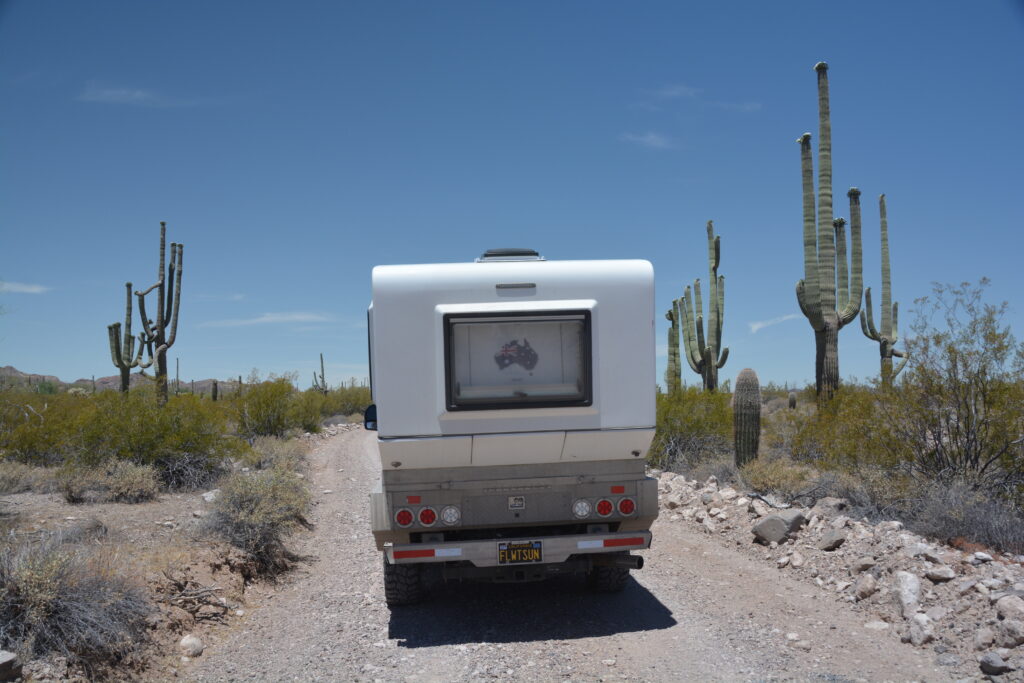
Have I mentioned the deserts? We stopped in Yuma, the town filling up the furthest western corner of the state, for supplies and then headed east across the Sonoran Desert, almost void of human habitation, over 40°C (104°F), only the scraggiest of plants surviving in this environment. And yet, it looked great.
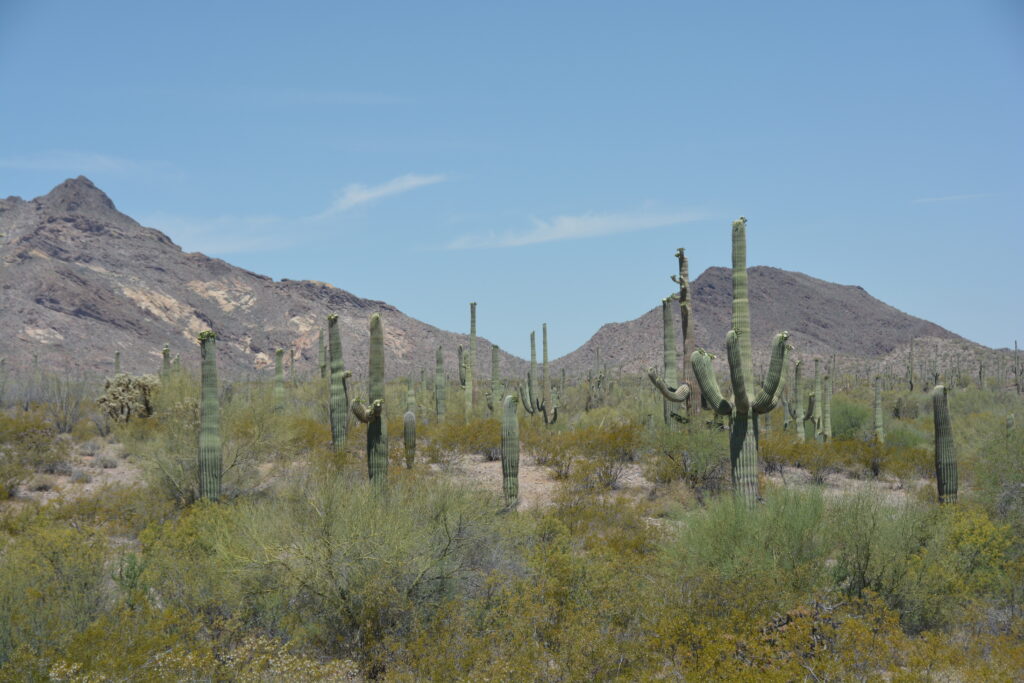
Our target for the night was Organ Pipe Cactus National Monument, a large park pushed up against the border with Mexico, featuring a rich array of cacti but in particular the tall and human-like Saguaro and the stylishly distinctive Organ Pipe. We were in heaven.
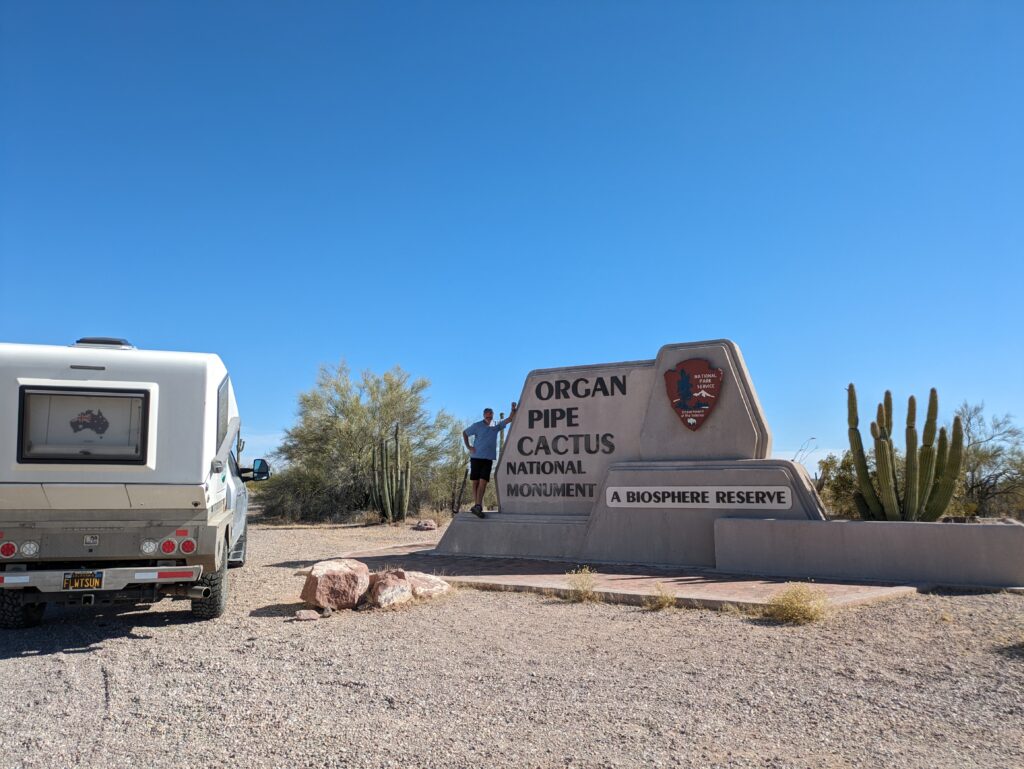
After a night in their campground (showers!) we spent the day driving the two dirt road loops that explore all this fabulous park has to offer. The first loop, about 42 miles (67 kms) passed through open plains and over red-rock mountain ridges and showed off it’s wonderful collection of Saguaro, Organ Pipe, Senita, Ocotillo and Cholla cacti.
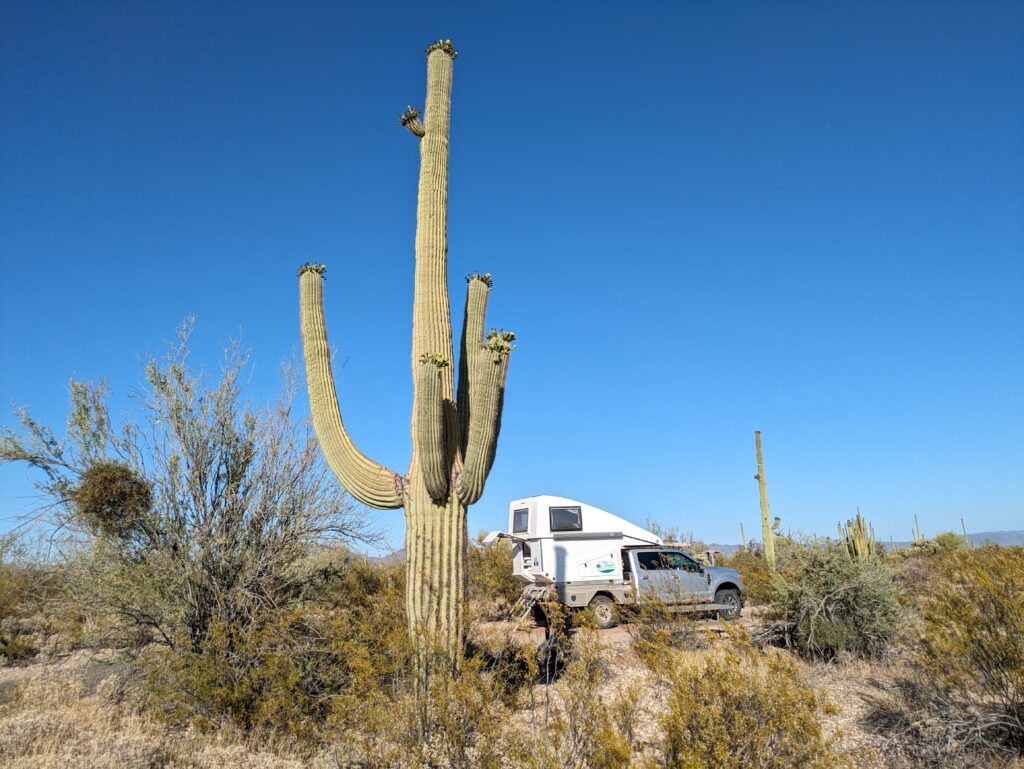
The Saguaro are everyone’s favourite, each almost human with their multiple arms and unique personalities. Some of these cacti definitely have attitude. The Organ Pipe and Senita cacti are much more common further south in Mexico but it was great fun to drive through the park and stop repeatedly to wander amongst them. And the various Cholla cacti are always sprinkled in amongst them all.
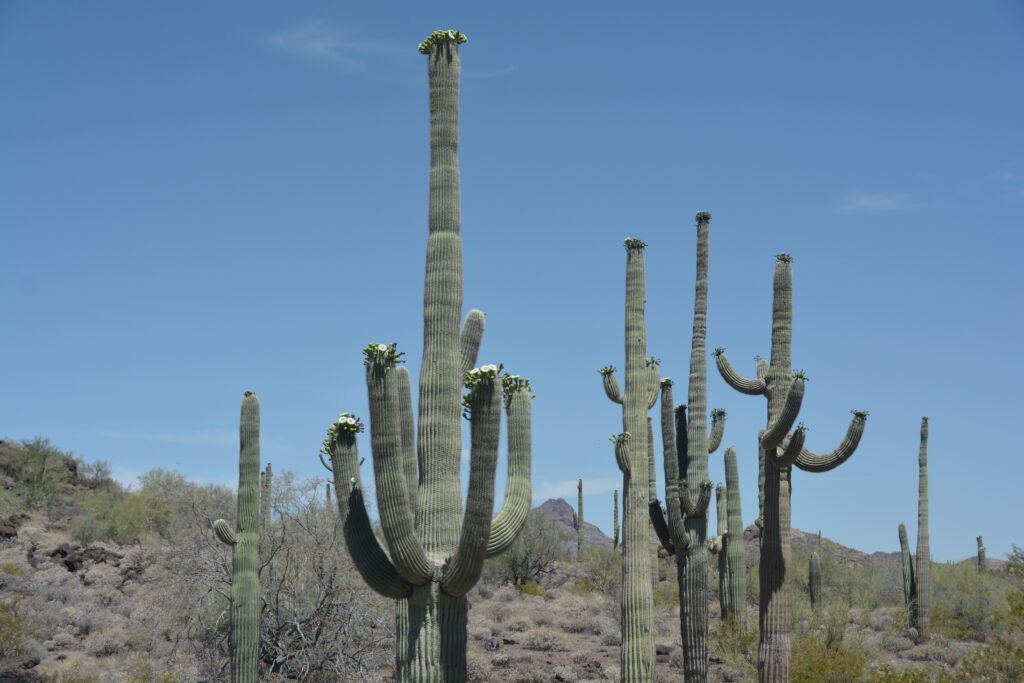
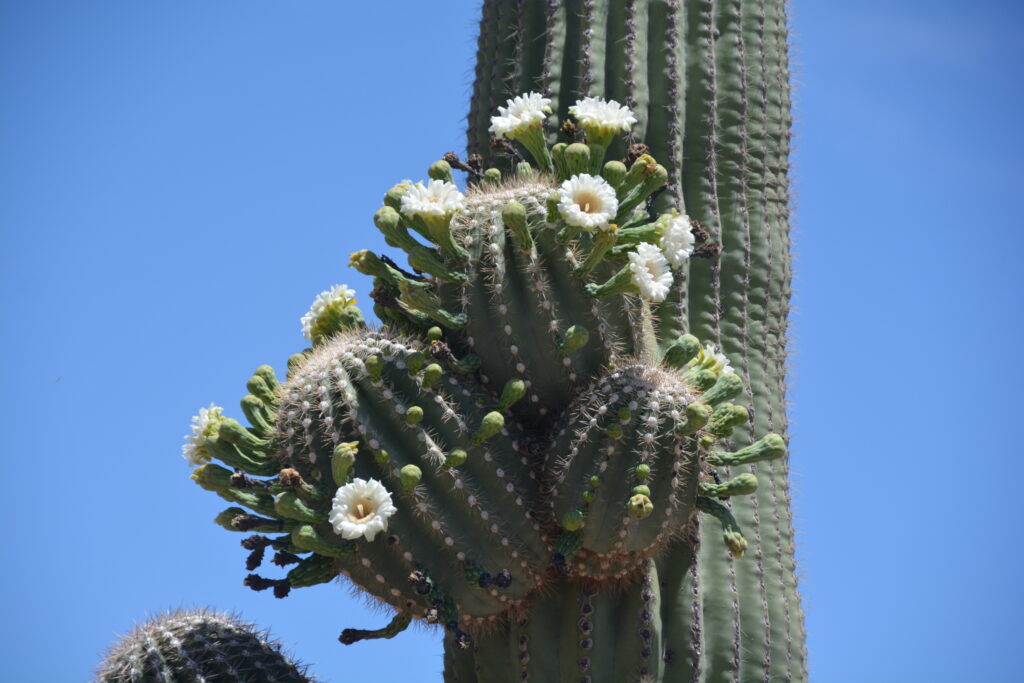
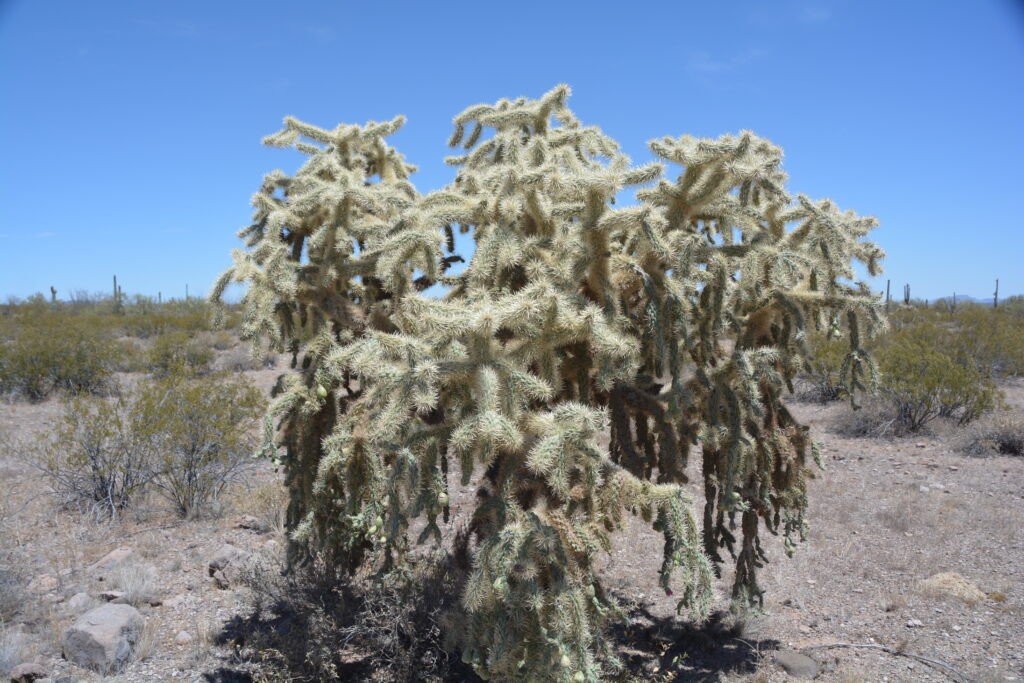
This loop road also had a long section directly alongside the wall that separates the US and Mexico. Regardless of what your views are on this issue there’s no doubting the overwhelming size and intent of this manmade structure as it crosses the vast desert plains and mountains.
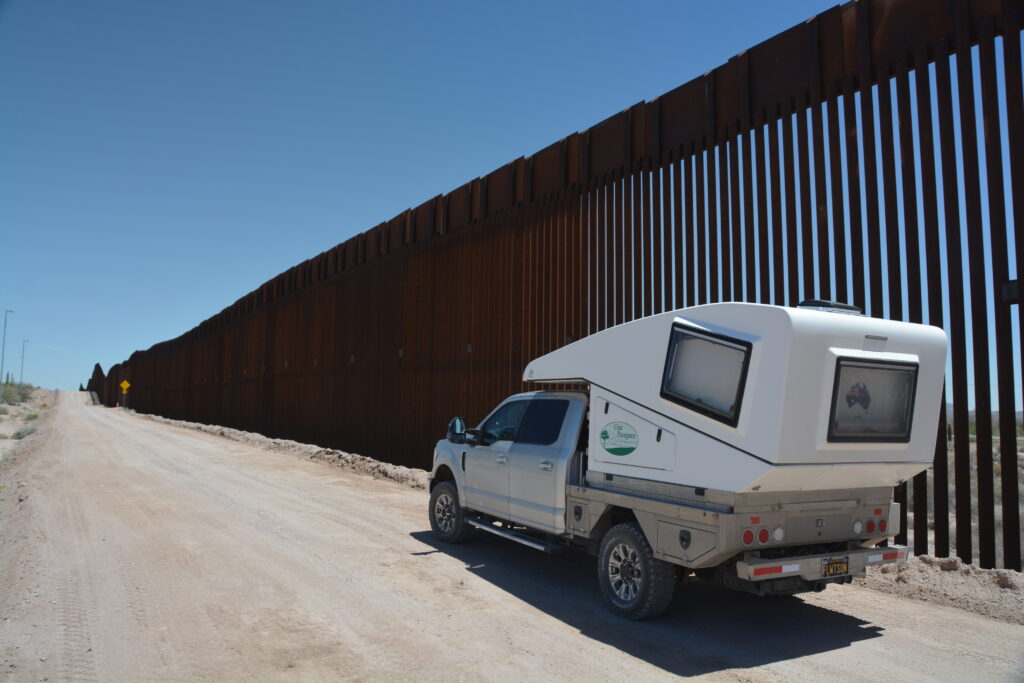
The second loop was 21 miles (34 kms) and weaved it’s way up and around the majestic Ajo Mountains, showing off more cacti along the way but this time with a stunning mountain range as a backdrop. Having run out of superlatives for this incredible day we camped of Alamo Canyon, beautiful canyon in a lost corner of the park, and had another stunning setting to spend the night. Organ Pipe Cactus National Monument takes it to the next level.
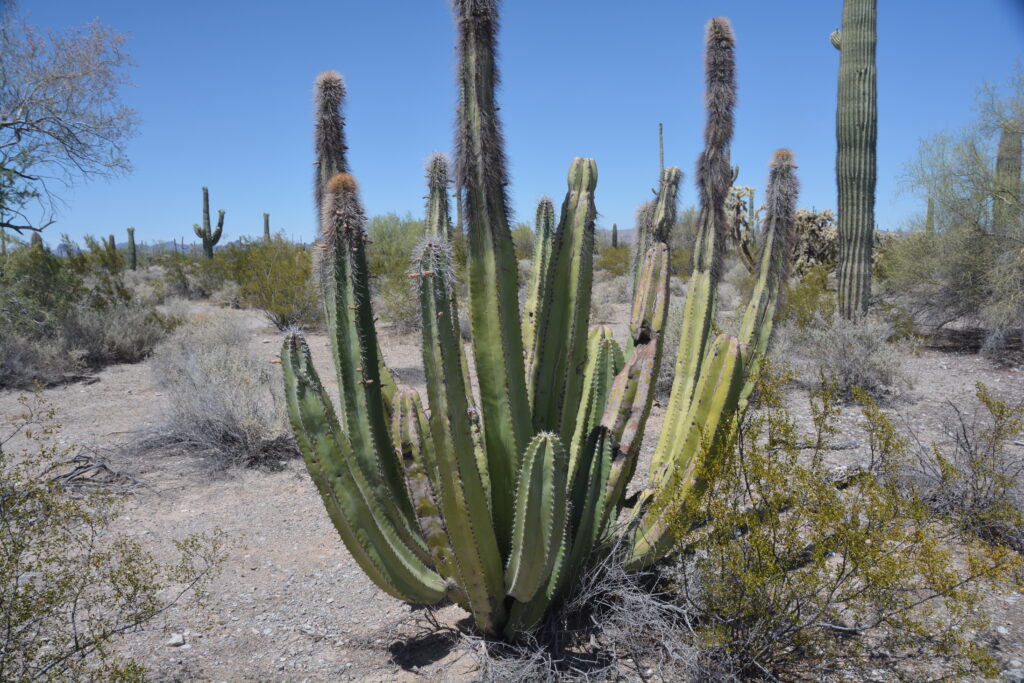
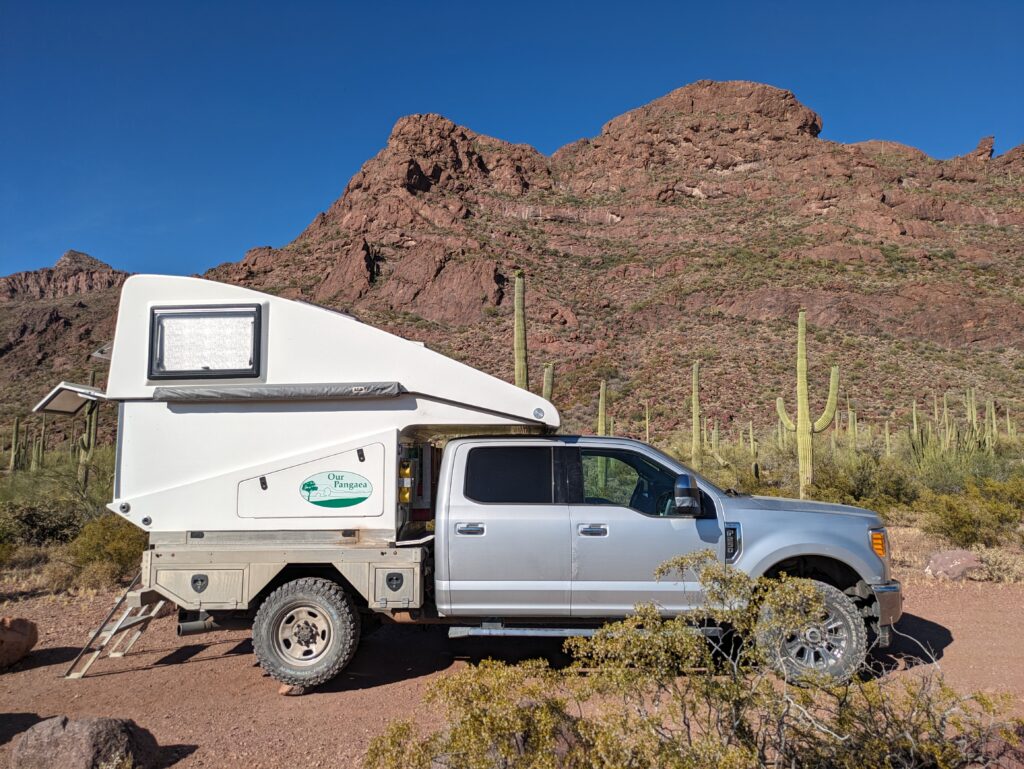
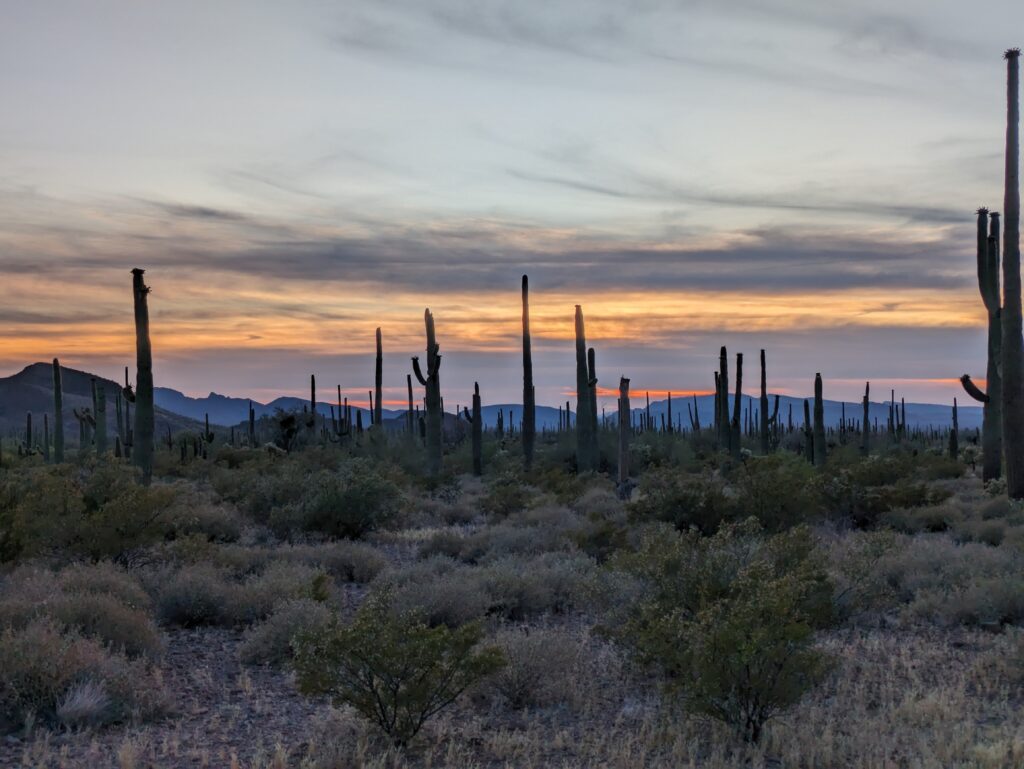
Reluctant to say goodbye to this area, we set the alarm for 0600 and while the shadows were long we walked up the canyon on an ancient trail, trying to beat the heat. We saw the desert at dawn, the first light shining through the cacti, the jagged red mountains waking up to a vaguely cool breeze. We made our way to the old cattleman’s home and their old corrals before turning around and enjoying the same walk again.
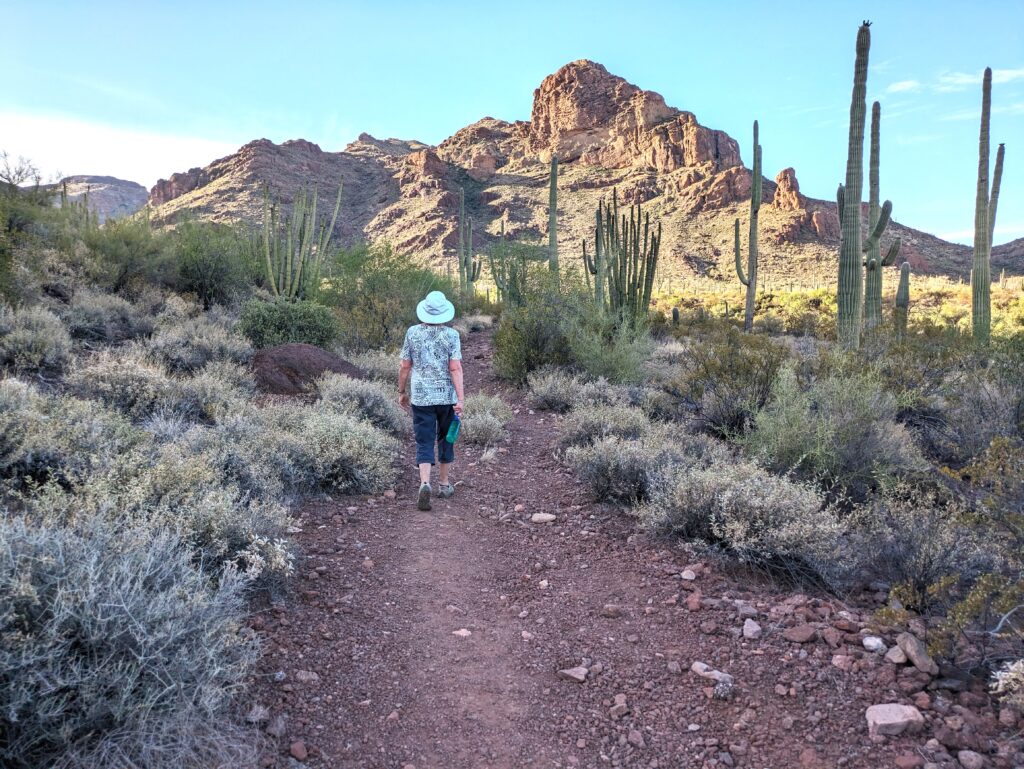
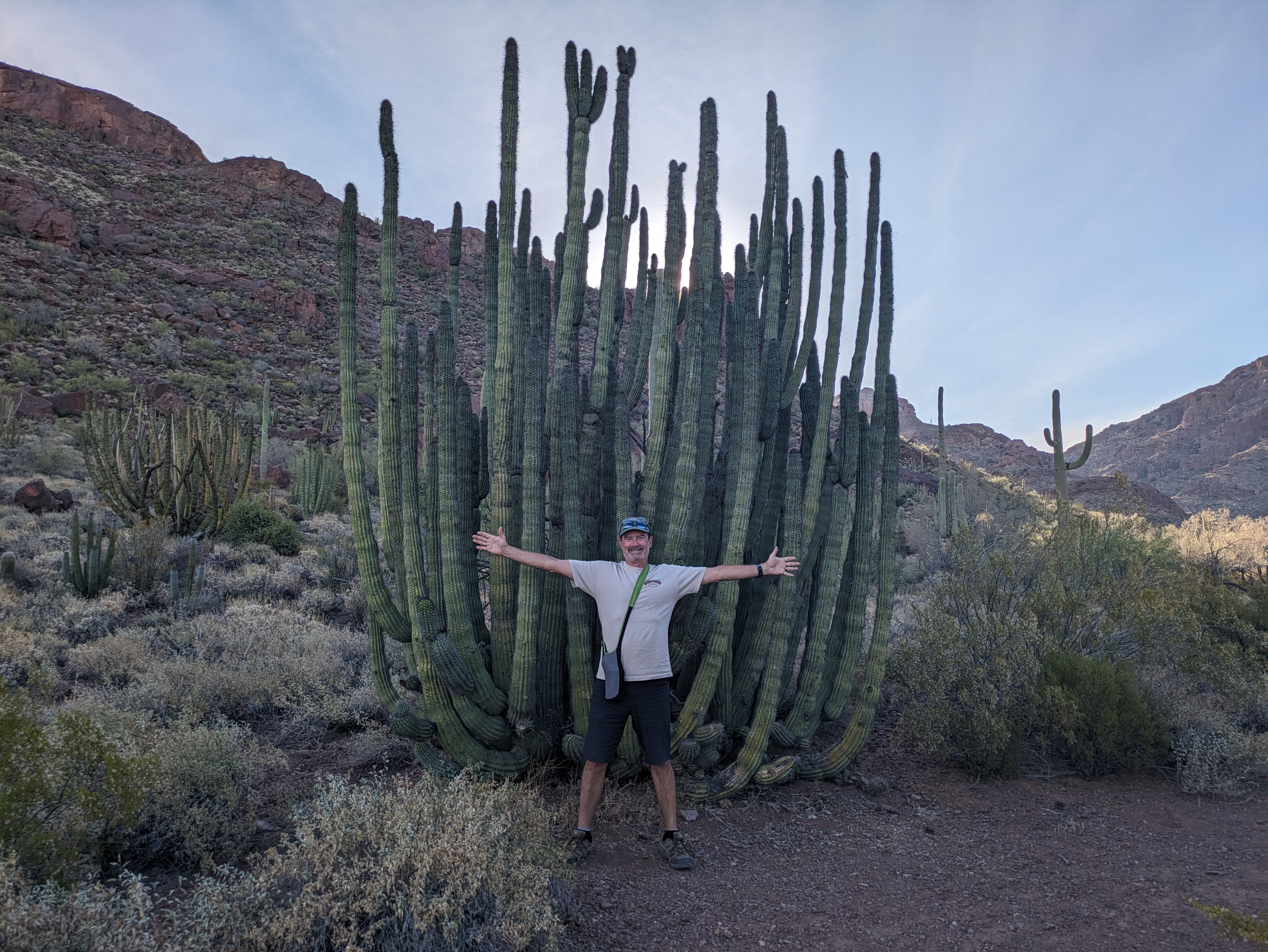
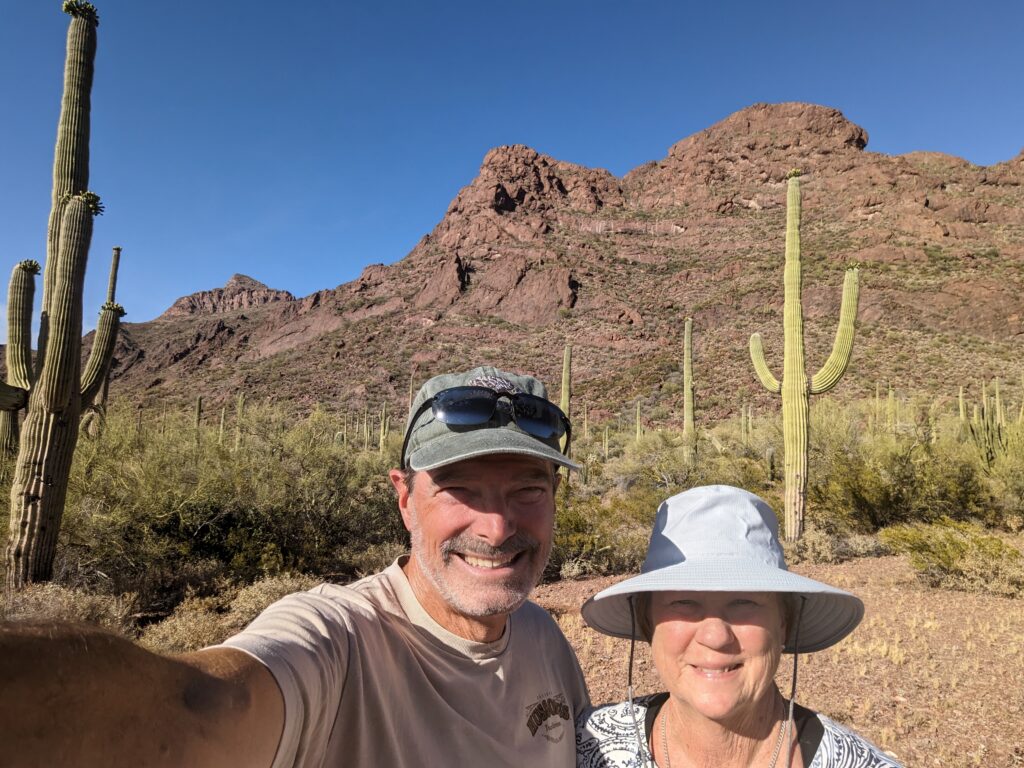
We packed up and headed back to a semblance of civilisation, finding the small community of Why (yes, Why) for fuel before heading off across more desert to the major southern Arizona City of Tucson. We avoided the big smoke, skirting it’s edges, pulling into Saguaro National Park for further immersion of this beautiful desert scenery.
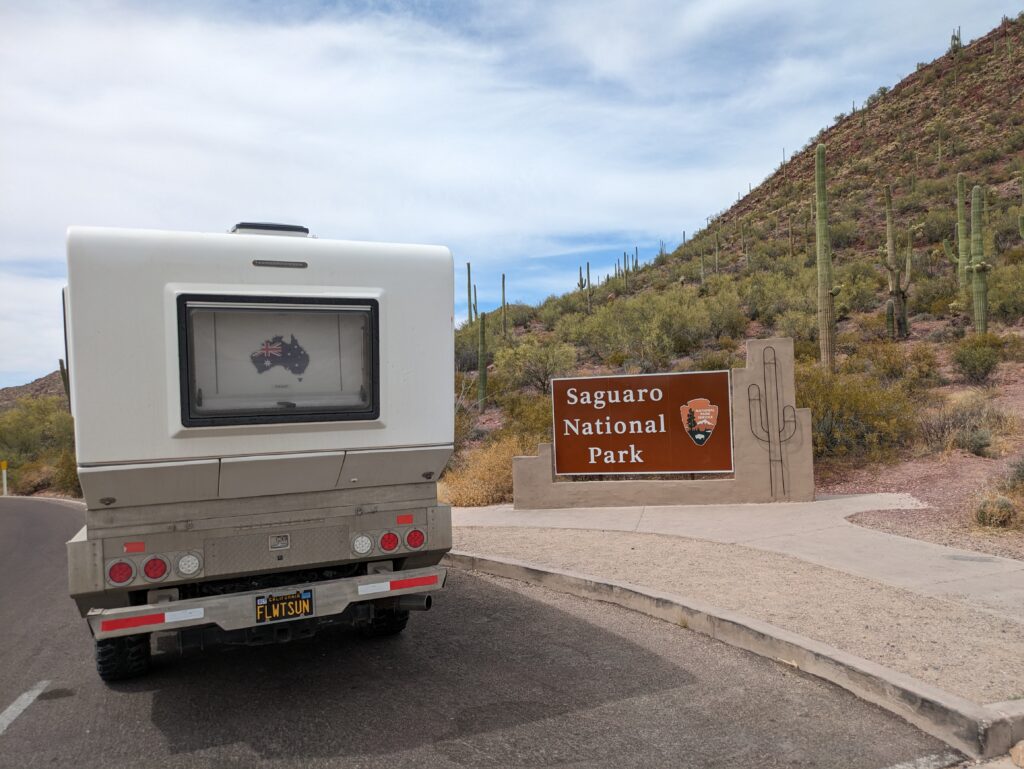
This national park, named after the wonderful saguaro cactus (a Spanish word pronounced, by the way, as suwaro) celebrates the almost human-like saguaro cacti and a dozen other wonderful treasures of the desert. We did the dirt road driving loop, stopping frequently for more photos, the blistering sun punishing us for even briefly leaving the air con.
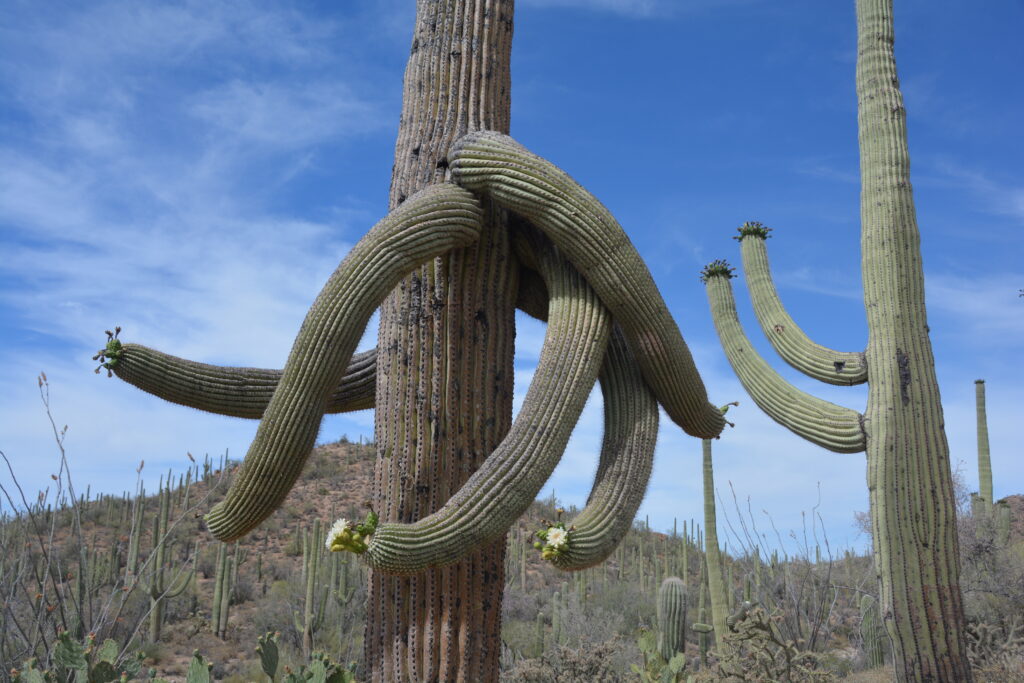
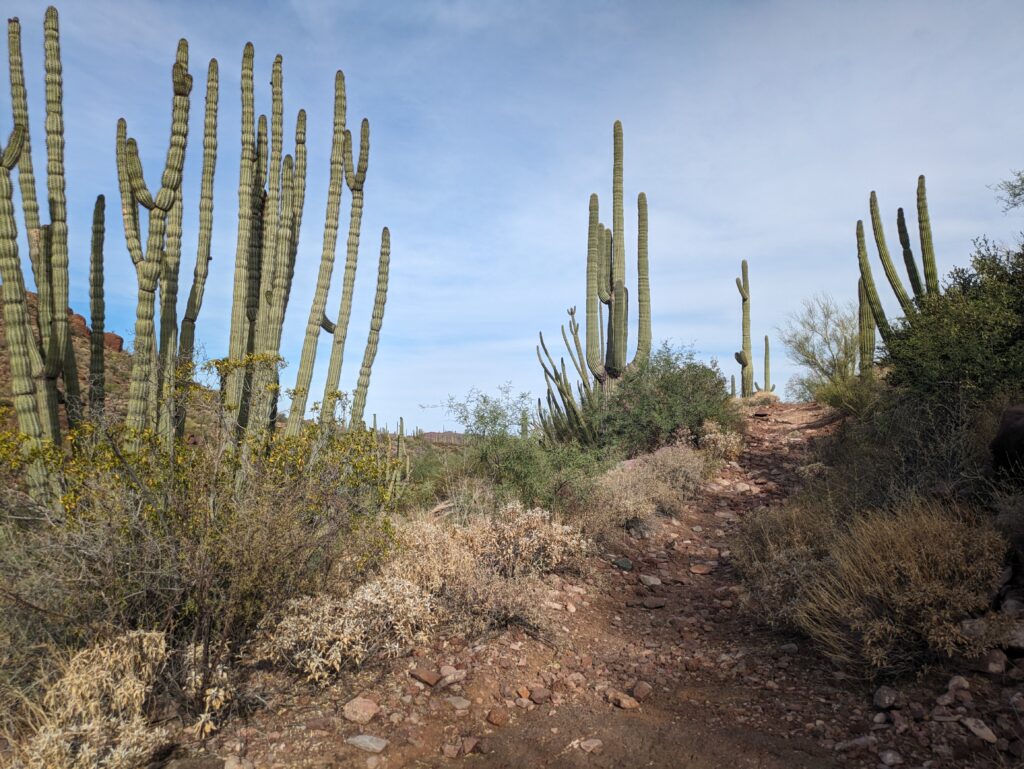
And then another great plan came to fruition. As we waited at the Visitor’s Centre my sister Kathy and her husband John rolled into the car park with their brand new Toyota Tundra and Four Wheel Camper. They had just spent the last two long days driving from their home in California to this site in southern Arizona and were now set to join us for about three weeks travelling together through Arizona, New Mexico and Colorado. Wow!
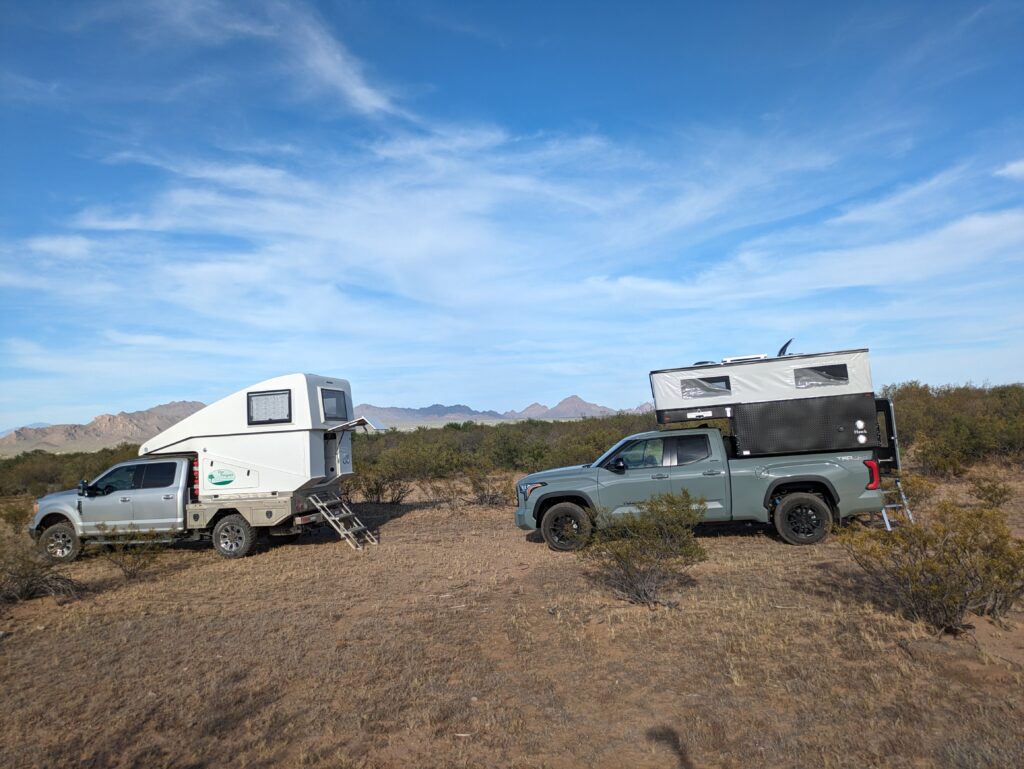
After a round of hugs and greetings we headed off into the desert and set up camp in Ironwood Forest National Monument, flat desert scrub all around us, the wonderful Tucson Mountains in the distance. Another great day and where once there were two there are now four.
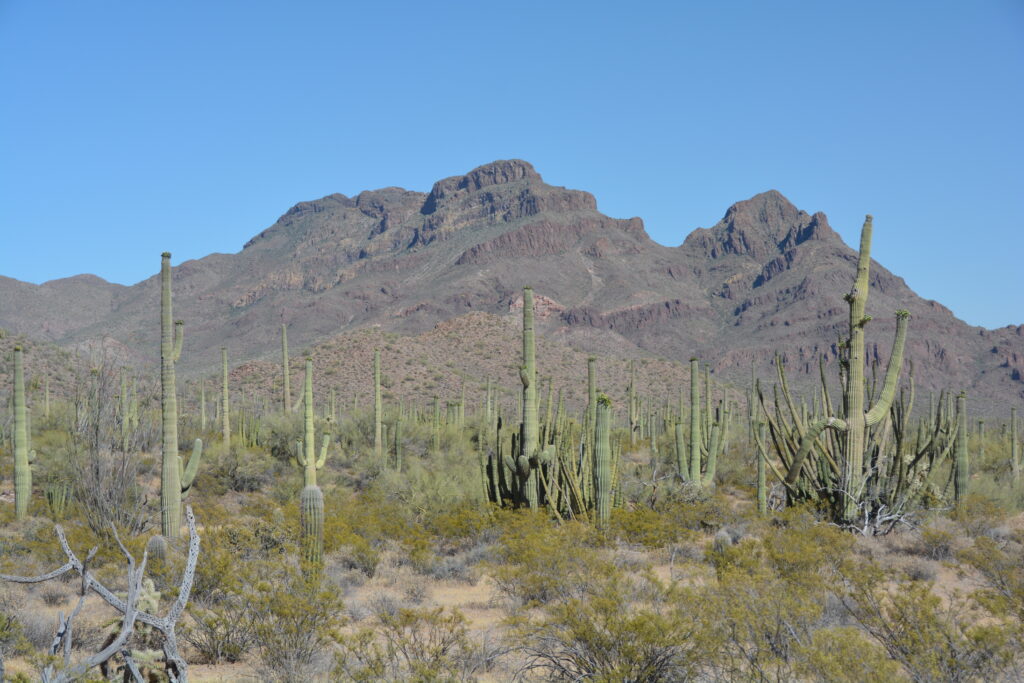
Saguaro National Park has two sections and for completeness and to feed our desert hunger we headed over to the eastern section where there was another fab loop drive through the various cacti but with temperatures already over 40°C (104°F) we chose our outdoor time carefully.
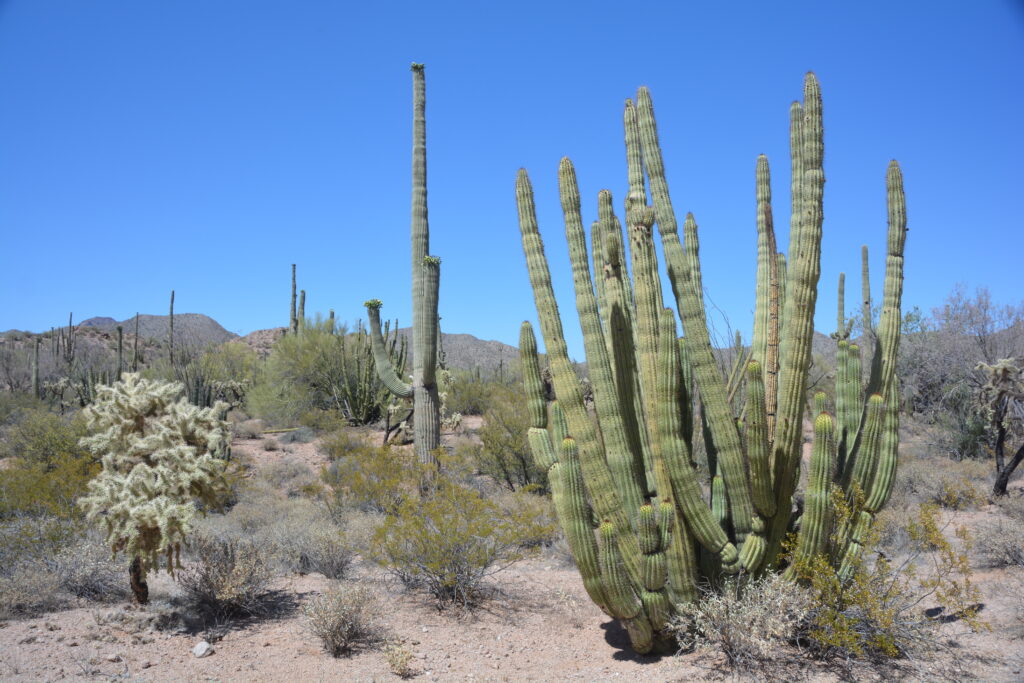
The southeastern corner of Arizona has a wonderful concentration of sprawling desert, rugged harsh mountains, cool tourist towns and American 19th century pioneering history. We headed down to this rich area to take it all in.
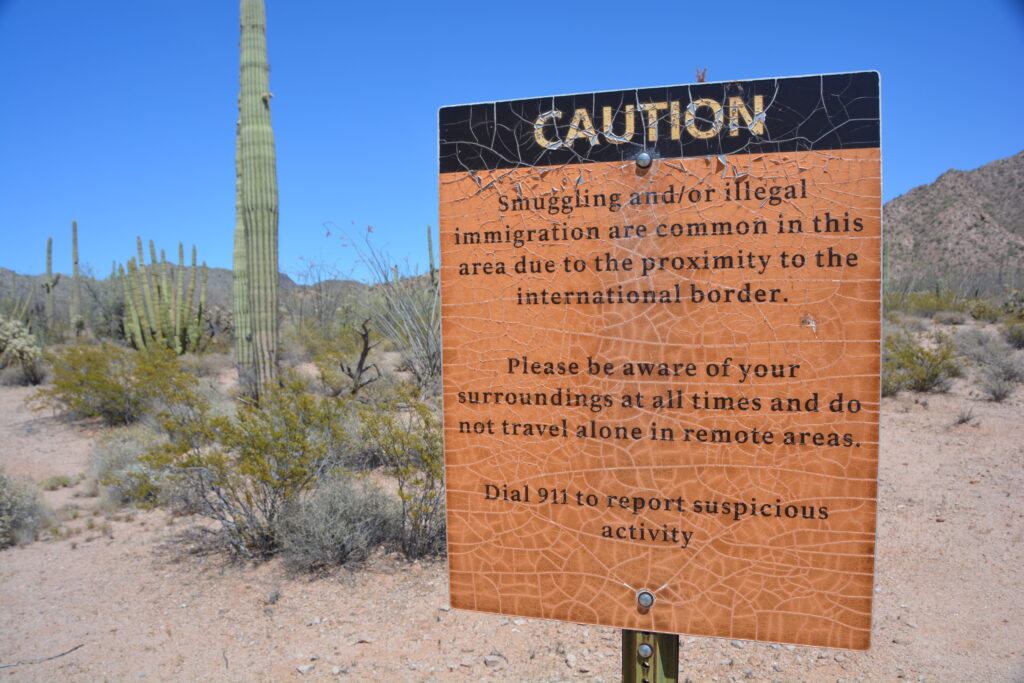
The small town Bisbee, nestled into the deep folds of the mountains, was once the site of extensive copper mining. Today it is a cute historic town, it’sh streets lined with buildings preserved from another era, alternative shops and a layback relaxed feel to it.
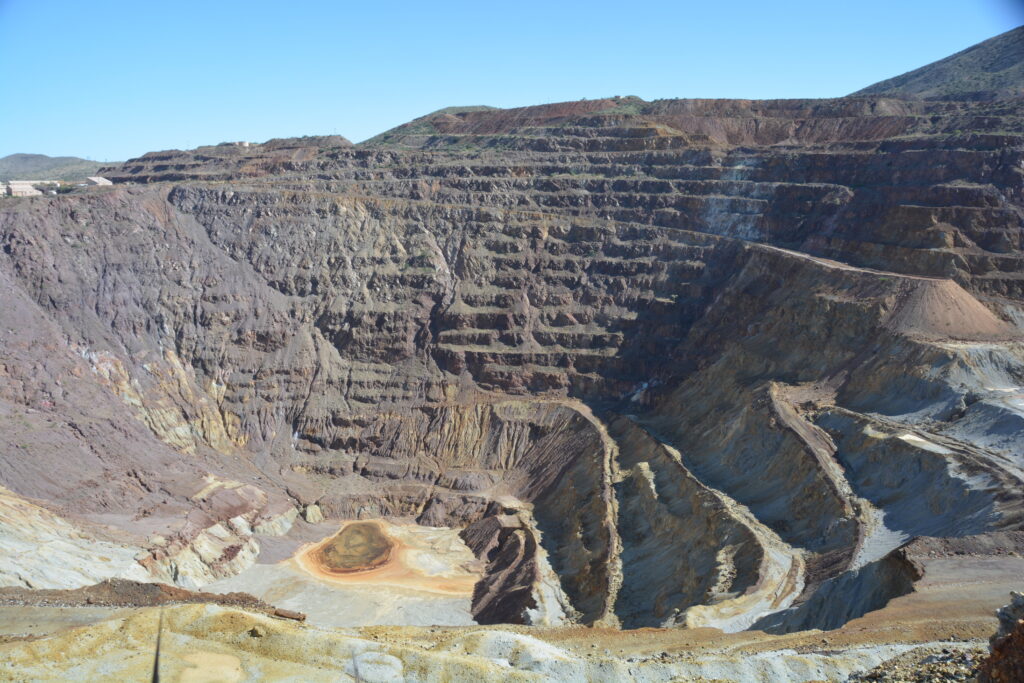
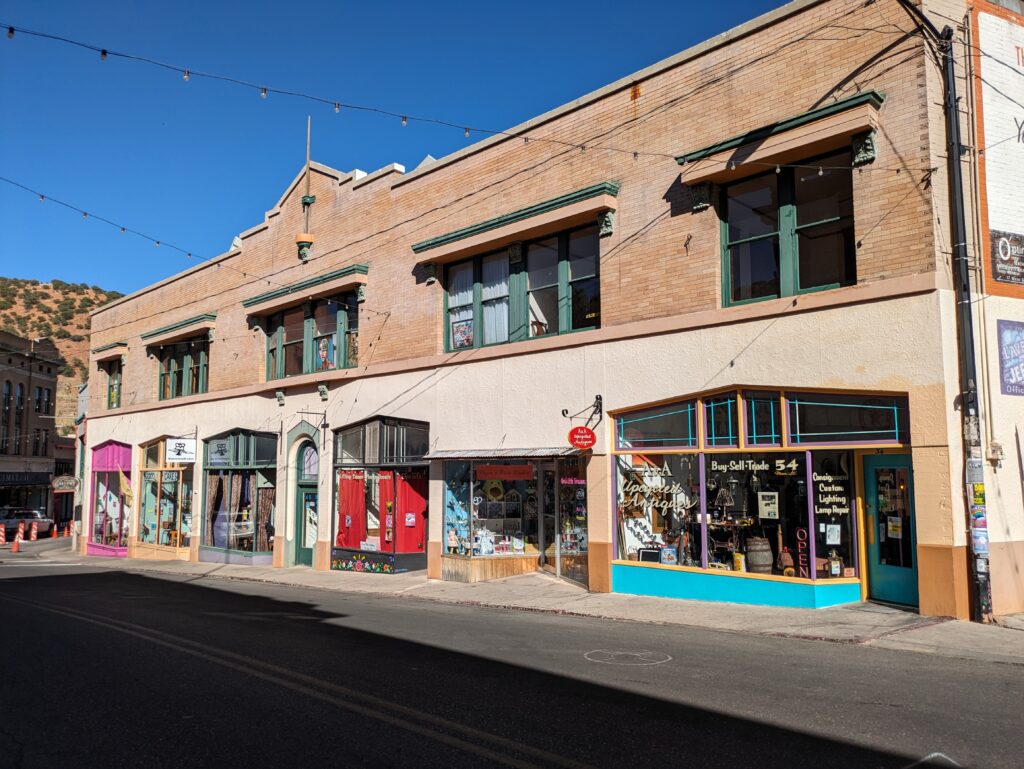
We camped that night on top of nearby Mule Mountain, following a dirt track that went almost vertical along the jagged edge. At 2,035 metres (6,675 feet) the air was mercifully cooler and we even sat around a fire, definitely more for ambiance than heat.
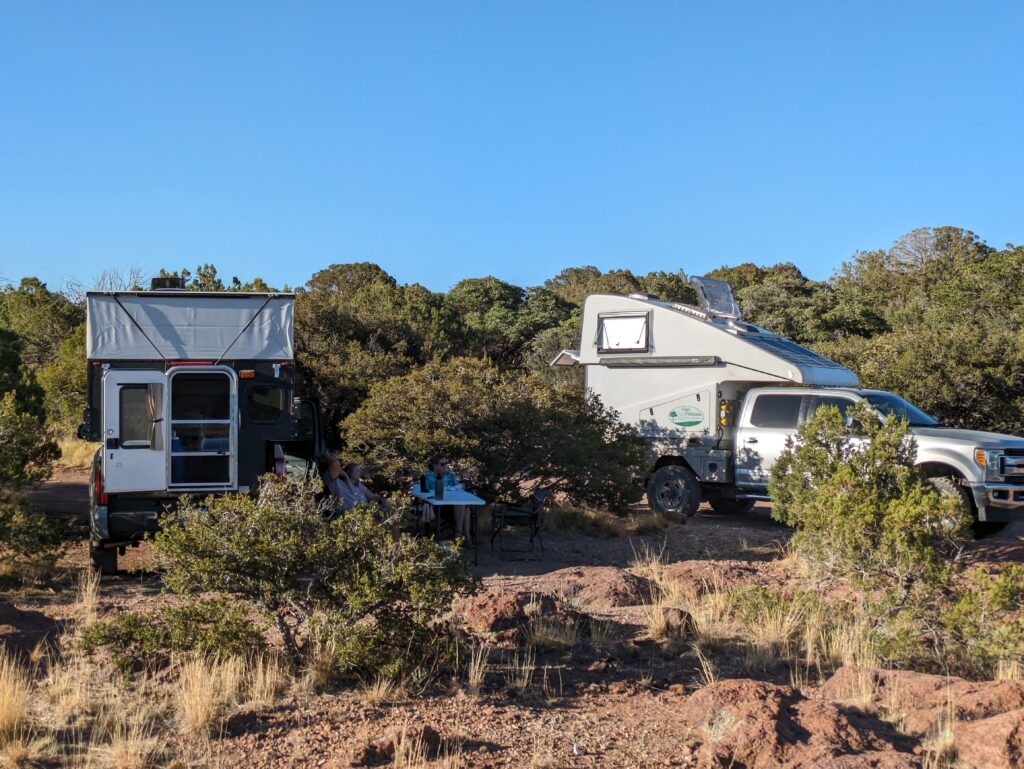
If you are our vintage you’ll remember watching those old westerns on black and white TV with people like Wyatt Earp and Doc Holliday set in towns like Dodge City and Tombstone. And it just so happens Tombstone is a real place, today largely recreated for visitors who want to dip into a little American wild west history.
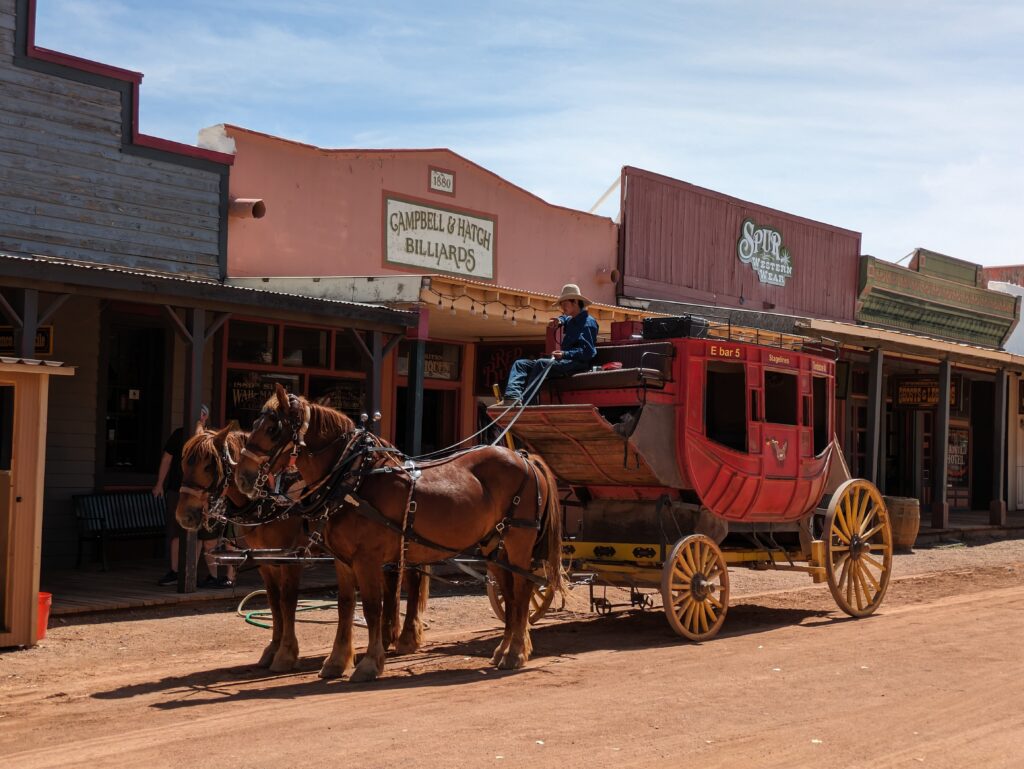
And so it was that after we walked the wooden sidewalks of the old town and explored a few of the historically-set shops we sat down with other tourists and watched an entertaining, if slightly corny, re-enactment of the shootout at the OK Corral at exactly the site it occurred. And just like back in 1881, Wyatt Earp and Doc Holliday killed three bad guys after their continuous harassment of the good folk in Tombstone.
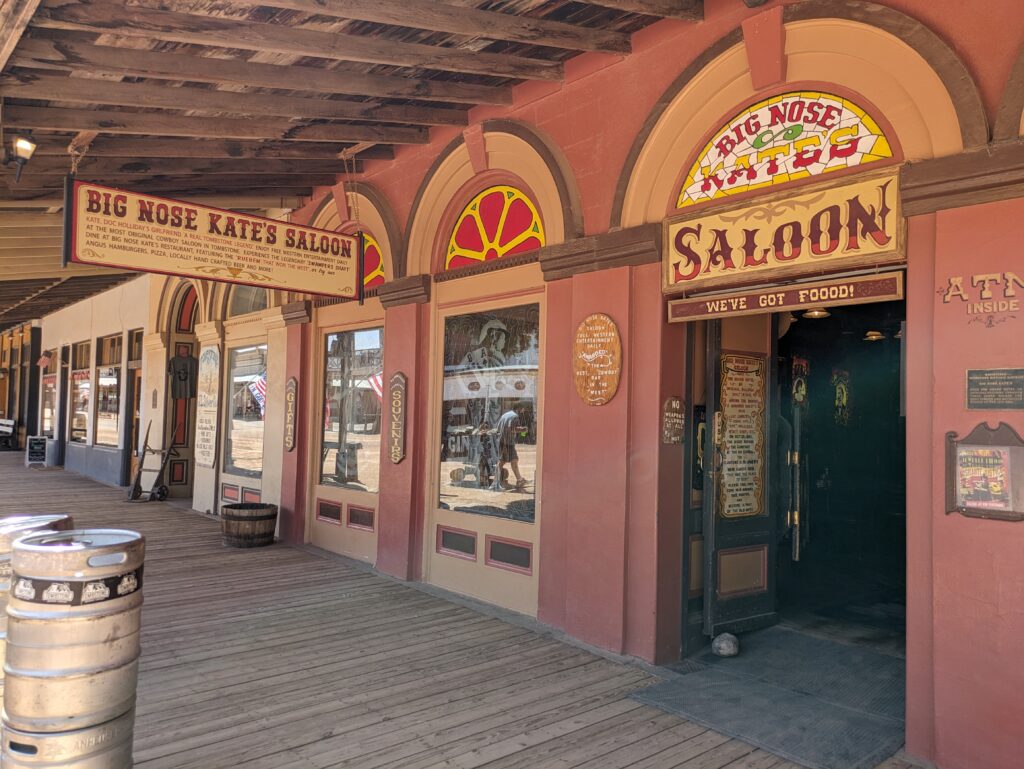
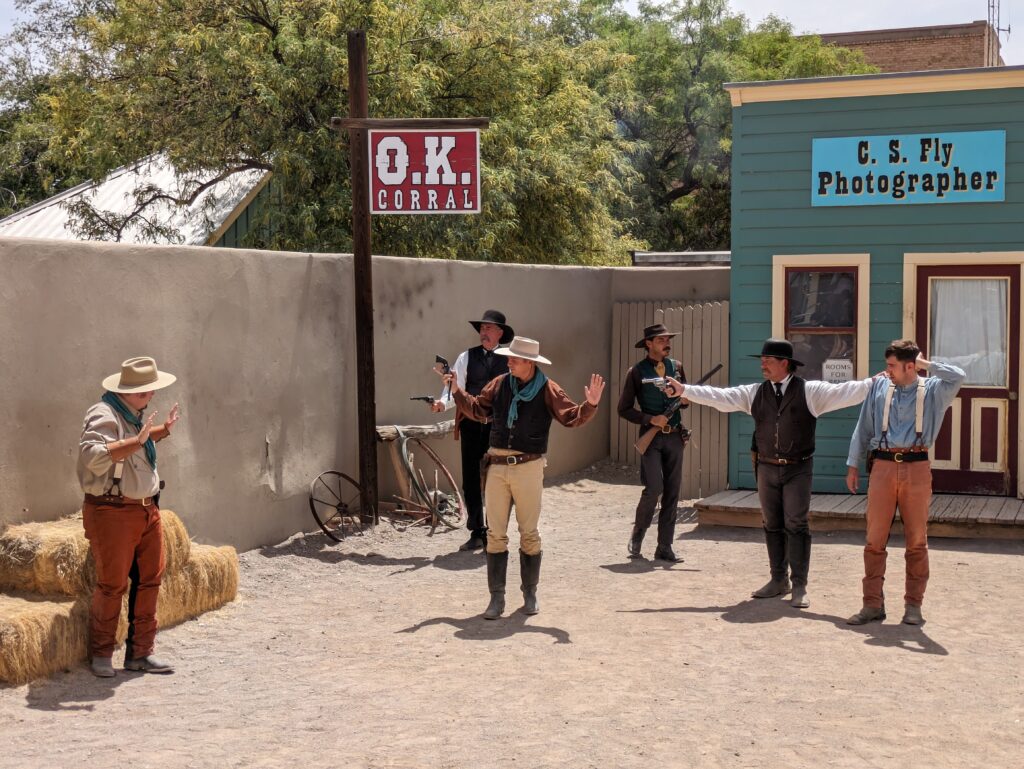
After refreshing ourselves with a cold sarsaparilla, as you do in 1881, we gratefully climbed back into our 2024 air-conditioned vehicles and crossed more of the stinking hot Sonoran desert, on a whim stopping to explore Chiricahua National Monument.
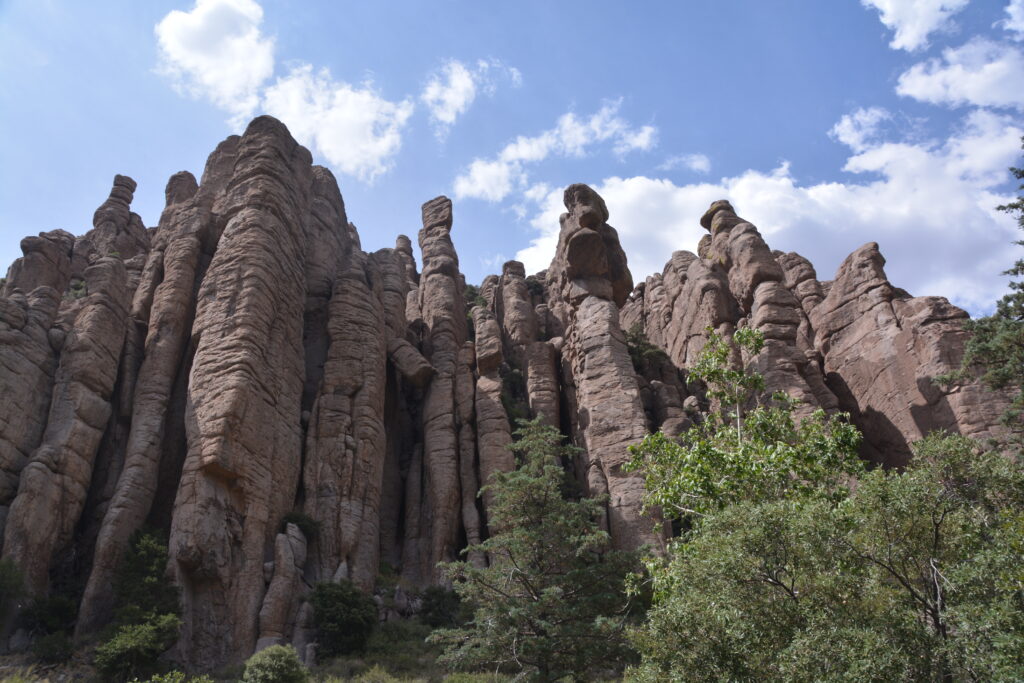
What a bonus this was! Chiricahua protects a large mountain range rising from the desert floor where 27 million years ago a volcano spewed a thick layer of ash which later broke into a spectacular array of tall pillars and towers, unique to anything we’d seen.
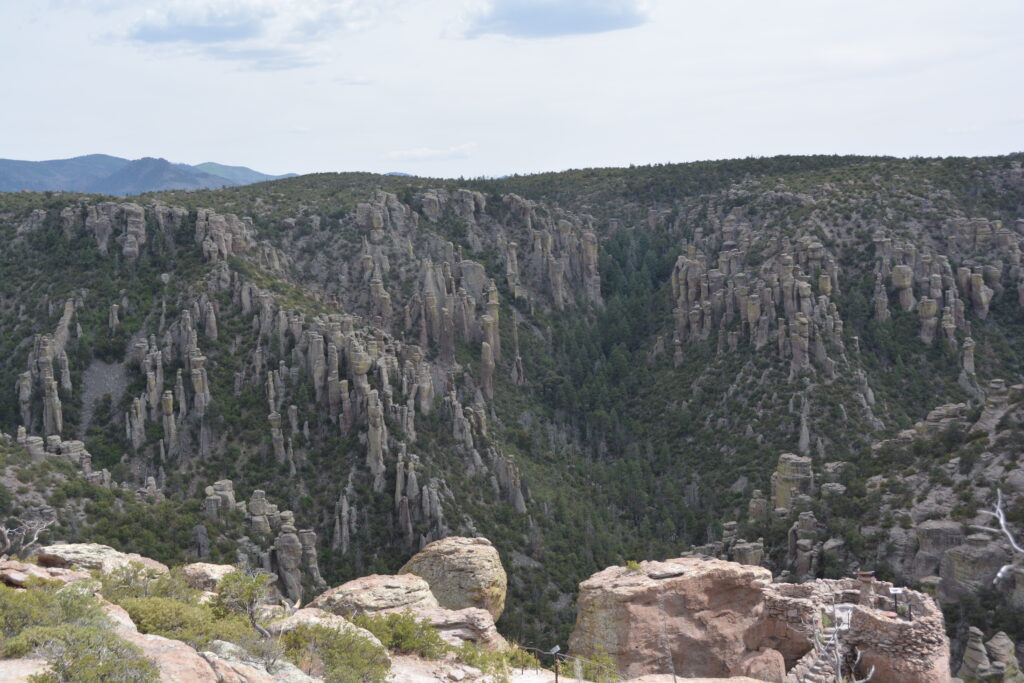
We drove to the top of the mountain, goggling at this amazing landscape, giving our Kodak plenty of work. And we’ll say it again, National Monuments in the US absolutely rock!
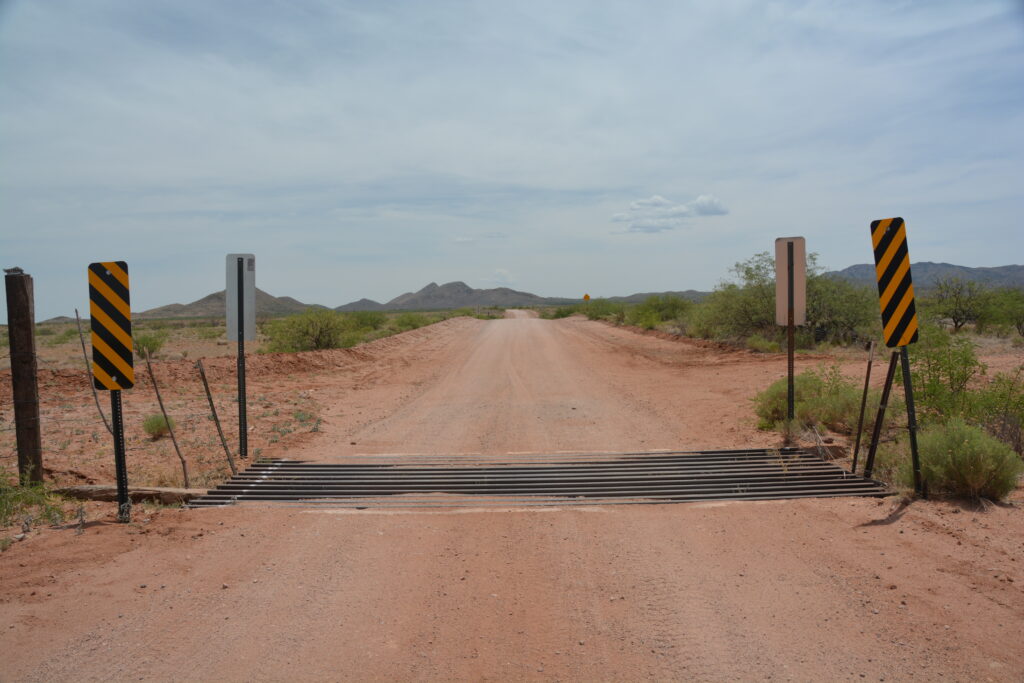
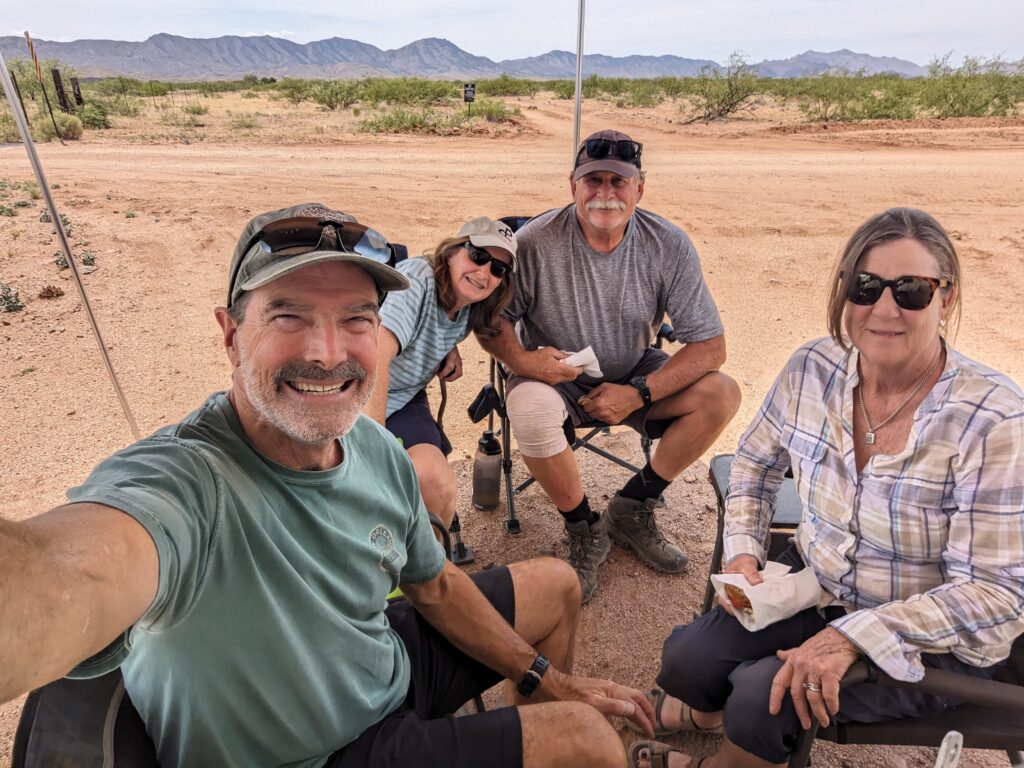
We had one more spot in this crazy-good corner of Arizona that we had to see. Fort Bowie was established in the late 19th century principally to fight marauding Indians who had the audacity to buck-up about white man’s western expansion. It sits near what is now called Apache Pass, in an otherwise inhospitable corner of nowhere. It was the site where Geronimo, the famed Apache Chief who led his men on rampaging raids in Arizona and Mexico, finally surrendered to American troops.
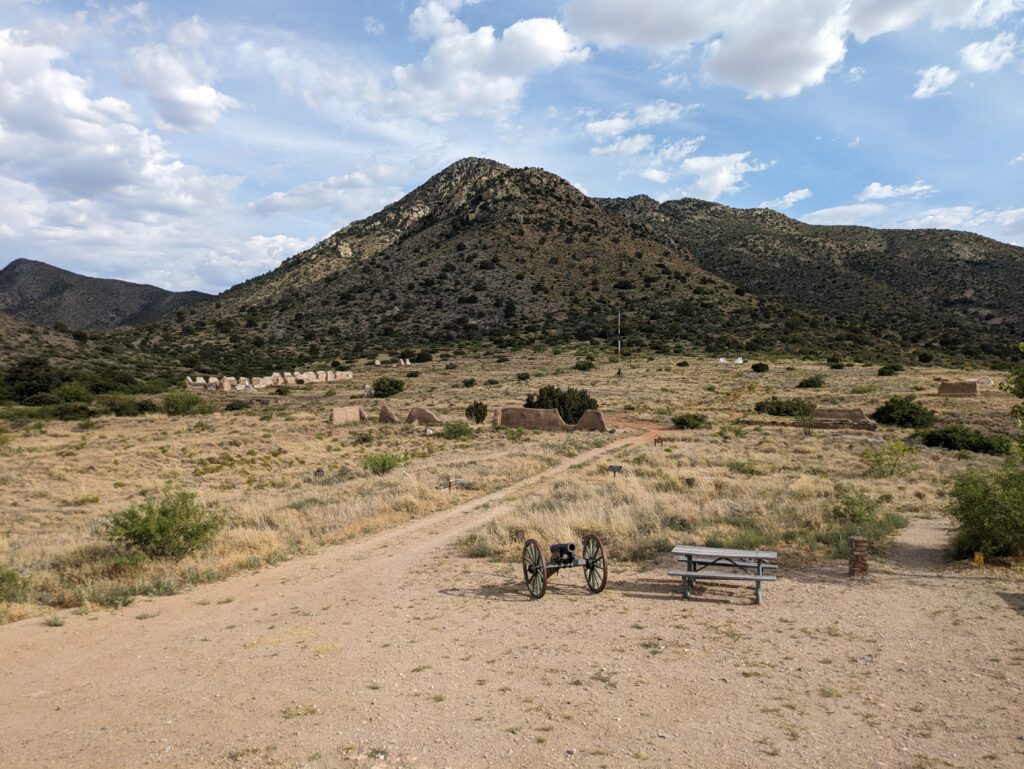
Today there is little left of the original fort but information boards helped paint this important historic scene of how, one way or another, the American west was ‘won’.
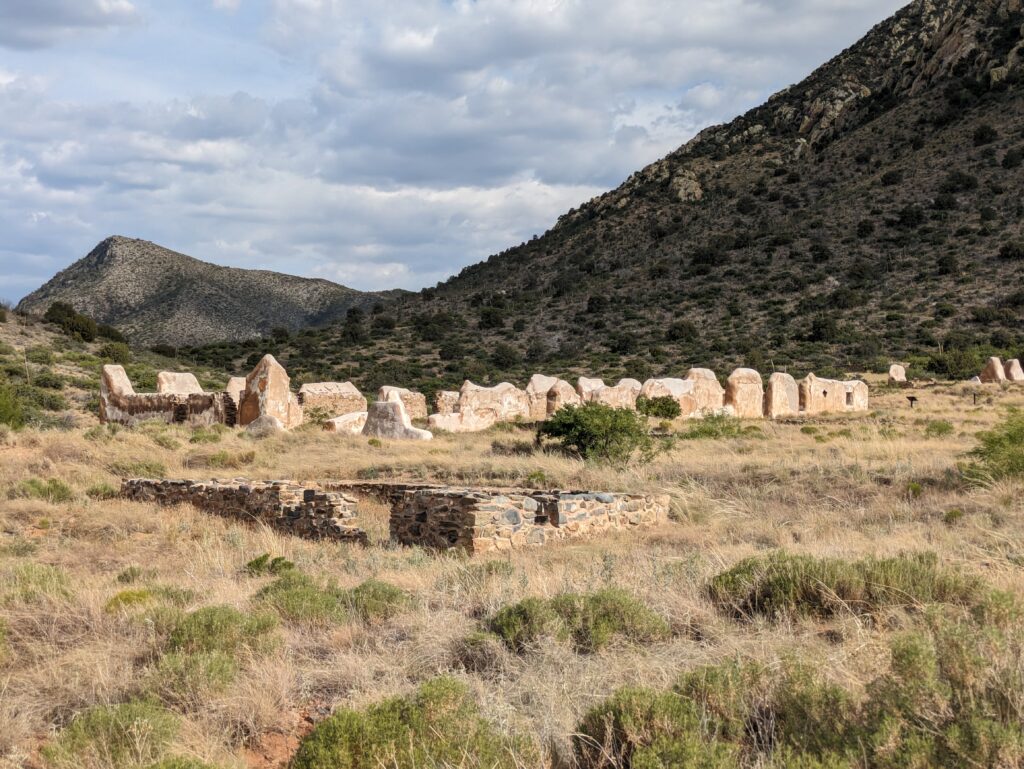
We camped that night at 1,200 metres (3,930 feet) at the base of some wonderful smooth granite rocks, almost piled up intentionally for our enjoyment. We were buggered from the heat and effort of the day but buzzing over the rewards of reaching out in travel to see and learn a bit extra. And tomorrow it will be a new state – New Mexico.
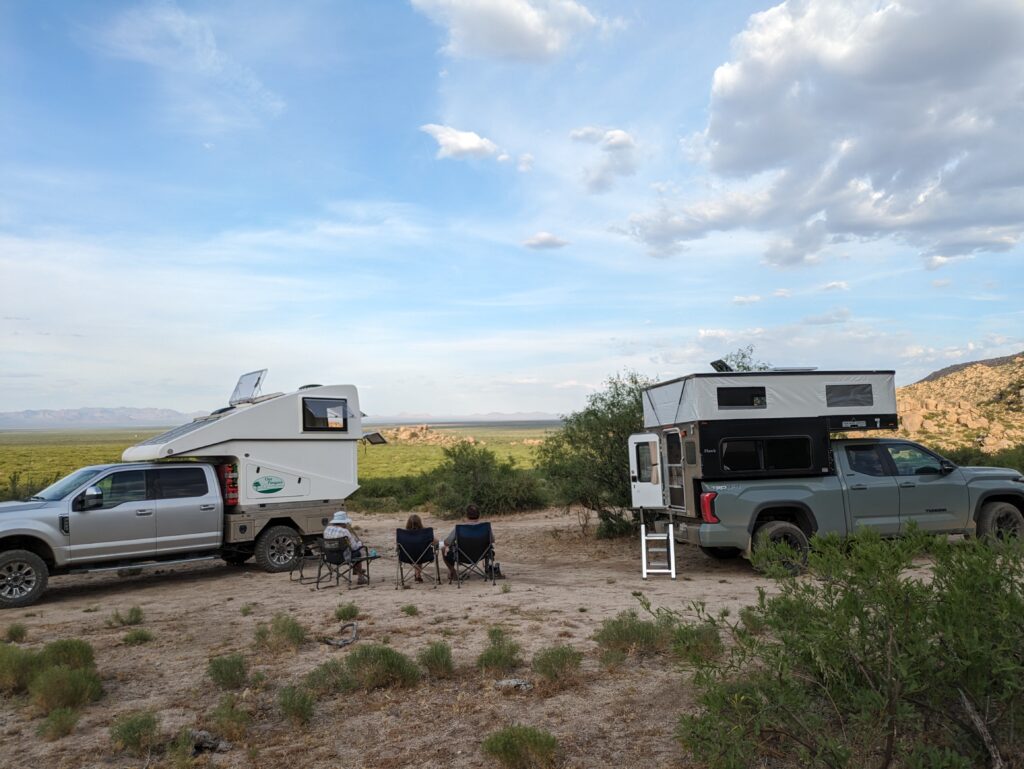

Comments
Arizona — No Comments
HTML tags allowed in your comment: <a href="" title=""> <abbr title=""> <acronym title=""> <b> <blockquote cite=""> <cite> <code> <del datetime=""> <em> <i> <q cite=""> <s> <strike> <strong>